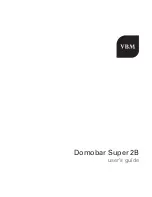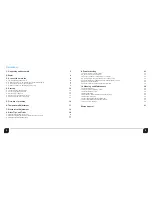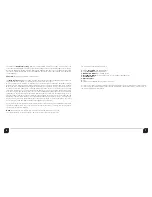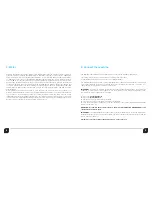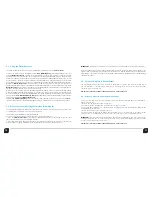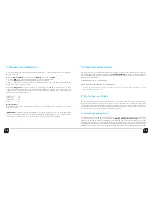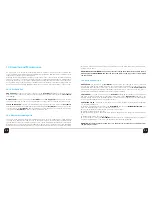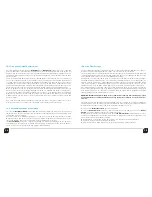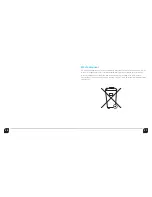
22
23
9.4. I can pump water, but the water is always cold
• Be sure the
Power Switch
is turn on position I.
• Over Temperature Safety Thermostat tripped. This occurs if the pressurestat malfunctions or the water
level is not maintained in the boiler. In either case the boiler can overheat. To save the machine from
damage, there is an over-temperature thermostat that protects the machine much like a circuit breaker
or fuse protects the wiring in your home. And much in the same way as a circuit breaker, the over-
temperature thermostat can be reset. If you suspect that the thermostat has been tripped it is important
to verify the cause before continuing: please contact your retailer’s service department.
9.5. The Machine Stopped Suddenly in the Middle of a Pull
• Check the water level in the
Water Reservoir
.
9.6. The Coffee Tastes Bad
The list of causes is nearly endless. Volumes can be written on what can cause espresso to taste bad,
some of which is discussed in the general instructions.
Here are a few tips to help:
• Be sure that the coffee you are using is fresh.
• Try a different brand of coffee.
• Are you using a quality grinder and grind the beans fresh for each use?
• If you know someone who makes espresso, invite them over and let them try making espresso
with your equipment and coffee. Sometimes the smallest change in procedure can make a big
difference in taste.
Bitter coffee can come from:
• Water that is too hot
• Coffee that is over-roasted or stale
• Cheap, low-quality coffee
• Worn burrs or low-quality grinder that makes too much dust
• Brew pressure that is too high
• Not using enough coffee in the portafilter
Sour tastes can come from:
• Brewing temperature that is too cold
• Coffee that is under roasted
• Brew pressure that is too low
• Bad or spoiled coffee
9.7 The Brew Pressure Gauge Acts Erratically
The Brew Pressure Gauge on the front panel should only be used as a general indicator as to what is
happening during the brewing cycle. The only time when the gauge will display any useful information
is when there is a properly prepared portafilter, filled with properly ground and tamped coffee, locked in
the Grouphead, and the brewing process is underway. At all other times, even when the pump is refilling
the boiler, this gauge is not displaying any useful information and should be ignored. Even when the pull
is underway the brew gauge will read a little higher than the actual brew pressure at the coffee. If all is
going well, the gauge should read about 9 to 10 BAR during most of the pull.

